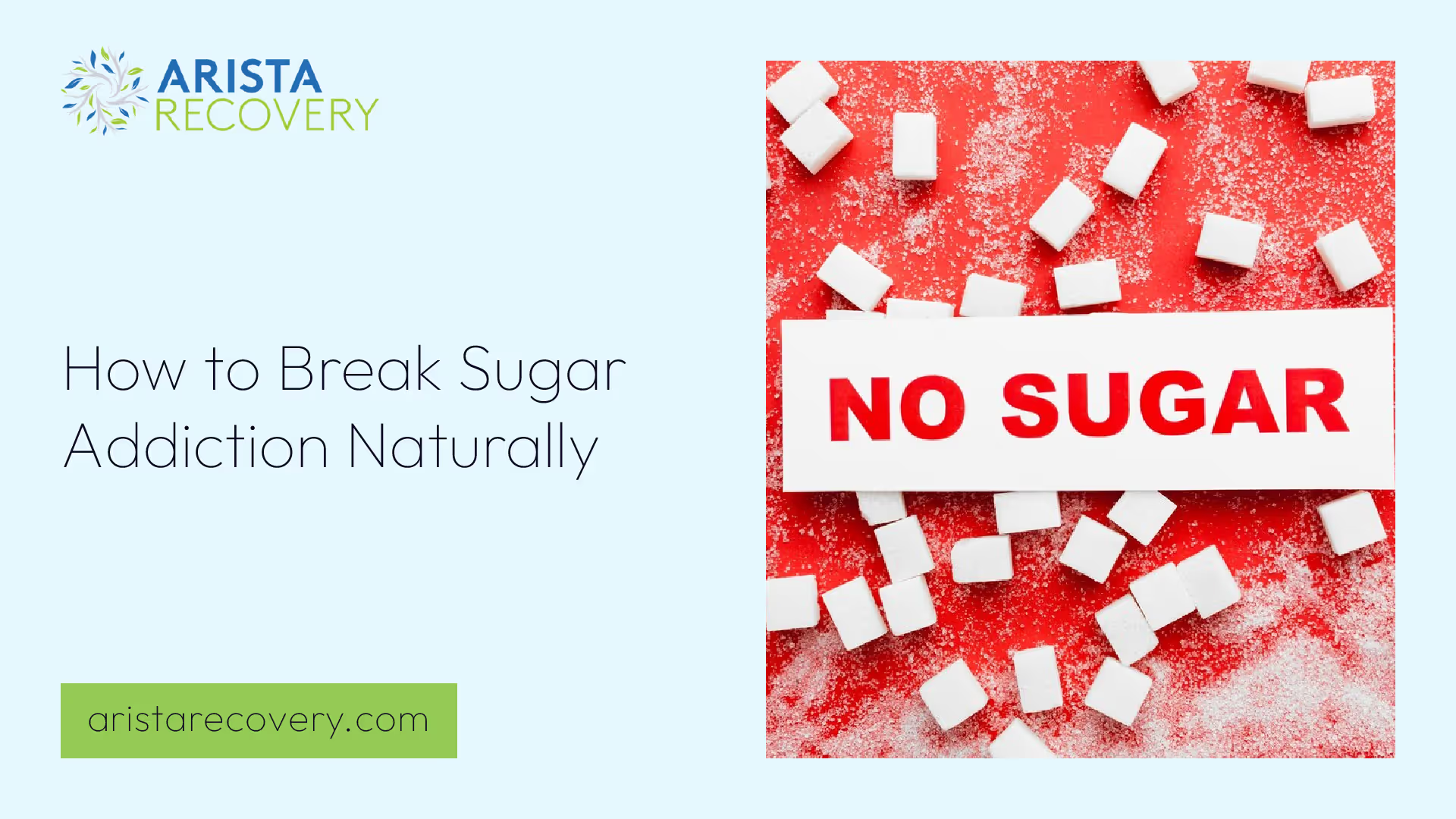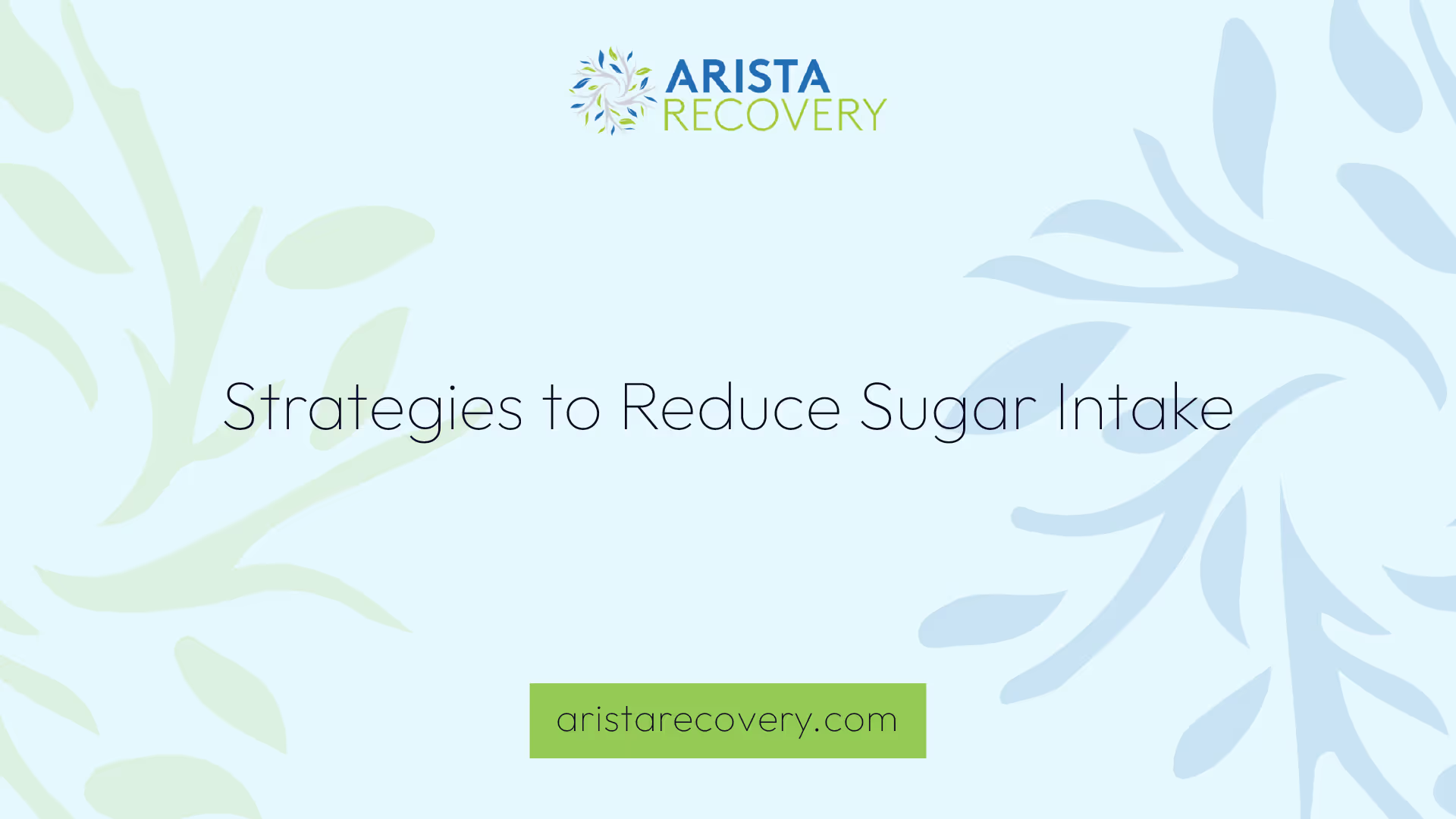How to Break Sugar Addiction Naturally


Understanding Sugar Addiction
Sugar addiction is a complex issue that affects many individuals and families. To combat this addiction, it's crucial to understand the science behind sugar cravings and the impact of sugar on the brain.
The Science Behind Sugar Cravings
Sugar is often claimed to be as addictive as drugs like cocaine and heroin. Studies have shown that lab rats prefer Oreos over injections of morphine, highlighting the strong link between sugar and dopamine in the brain [1]. Dopamine is a neurotransmitter that plays a key role in the reward system of the brain, and its release is associated with pleasure and satisfaction.
When sugar is consumed, it leads to significant surges of dopamine, similar to the reaction induced by substances like heroin and cocaine. This response can be attributed to the brain's historical need for high-calorie foods for survival [1]. However, in today's world, where sugary foods are readily available, this evolutionary trait can lead to overconsumption and addiction.
Factors Influencing Sugar Cravings
- Genetic predisposition
- Stress and emotional states
- Dietary habits
Impact of Sugar on the Brain
The impact of sugar on the brain is profound. When sugar is ingested, it triggers the release of dopamine, creating a feeling of pleasure. This pleasure reinforces the behavior, making individuals more likely to seek out sugary foods to replicate the feeling. This cycle can lead to dependency and addiction.
In individuals recovering from substance use, intense sugar cravings are common in early sobriety. This is because alcohol and some drugs contain high levels of sugar, and the brain seeks out sugar as a substitute for the dopamine rush previously provided by these substances [1]. Addressing sugar consumption gradually over time is essential to avoid substituting one addiction for another.
Dopamine Release and Addiction
- High sugar intake leads to large dopamine release
- Reinforcement of pleasurable behavior
- Cycle of dependency
For more information on managing sugar cravings and strategies to reduce sugar intake, explore our articles on how to stop a soda addiction and how to stop dopamine addiction. Understanding the impact of sugar on the brain is the first step in breaking free from addiction and adopting a healthier lifestyle.

Managing Sugar Cravings
Effectively managing sugar cravings is essential for those looking to break their sugar addiction. By employing strategic approaches, individuals can significantly reduce their dependence on sugar.
Breaking Up Meals
Breaking up meals into smaller, more frequent portions can help maintain stable blood sugar levels, reducing the chances of sugar cravings. Instead of consuming three large meals, opt for five to six smaller meals spread throughout the day. This approach ensures a constant supply of energy and minimizes the urge to reach for sugary snacks.
Rethinking Sugar Sources
Rethinking sugar sources involves scrutinizing not just obvious sweets but also hidden sugars in drinks and processed foods. Beverages like sodas, flavored coffees, and even fruit juices can be major contributors to sugar intake. Opt for water, herbal teas, or black coffee instead. For more information, visit our guide on how to stop a soda addiction.
Preventing Sugar Cravings
Preventing sugar cravings before they start is a proactive approach. Planning ahead and eliminating junk food from the house are effective strategies [2]. Drinking water before a snack or meal can help fill you up faster and reduce the chances of consuming sugary foods. Additionally, lack of adequate sleep can lead to imbalanced blood sugar levels and increased sugar cravings, making it essential to prioritize sleep.
Regular physical activity also offers numerous benefits, including its impact on reducing sugar cravings. Exercise releases endorphins, which can lower stress levels and help combat the urge for sugar [3]. Engage in activities you enjoy, such as walking, yoga, or participating in sports, to distract from cravings and contribute to overall well-being.
By implementing these strategies, individuals can effectively manage their sugar cravings and take a significant step toward breaking their sugar addiction naturally. For additional tips and strategies, explore our related articles on how to stop dopamine addiction and how to stop online shopping addiction.

Strategies to Reduce Sugar Intake
Reducing sugar intake can be a key strategy in breaking sugar addiction. Here are some effective methods to help curb sugar cravings naturally.
Training Your Taste Buds
Training your taste buds to enjoy less sweet foods can be an effective way to reduce sugar cravings. This can be achieved by gradually cutting out one sweet food from your diet each week and putting less sugar in your coffee or cereal. Over time, your need for that sugary taste will diminish [4].
For more tips on reducing sugar intake, check out our article on how to stop a soda addiction.
Making Dietary Changes
Making small, simple changes to your diet can help you kick the sugar habit effectively. Consider incorporating more fruits and vegetables, drinking extra water, and checking food labels for sugar content [4].
Gradually cutting out sugar each week can also be beneficial. For more strategies, read about how to stop dopamine addiction.
Leveraging Protein and Fiber
Eating protein and fiber-rich foods can help curb sugar cravings. High-protein foods digest more slowly, keeping you full for longer and preventing blood sugar spikes. Proteins such as lean chicken, low-fat yogurt, eggs, nuts, or beans can be beneficial [4].
Fiber also helps fight sugar cravings by keeping you full, providing more energy, and preventing blood sugar spikes. High-fiber foods like fruits, vegetables, and whole grains are effective in curbing sugar cravings.
Combining protein with fiber, such as an apple with peanut butter, can be particularly effective. For more information on maintaining a balanced diet, refer to how to stop online shopping addiction.
By incorporating these strategies, individuals can naturally reduce their sugar intake and move towards breaking their sugar addiction.
Lifestyle Changes for Curbing Sugar Cravings
Implementing lifestyle changes can significantly help in managing and reducing sugar cravings. Here are some key strategies for naturally breaking sugar addiction.
Importance of Hydration
Staying hydrated is essential for overall health and can aid in reducing sugar cravings. Dehydration can lead to symptoms such as unclear thinking, mood changes, and constipation, which may trigger sugar cravings. The National Academies recommend approximately 9 cups of water for women and about 13 cups for men, including all fluids but excluding liquid obtained from food [5]. Ensuring proper hydration can help maintain energy levels and reduce the urge for sugary snacks.
Prioritizing Sleep
Getting adequate and quality sleep is crucial for regulating hormones that affect appetite and cravings. Lack of adequate sleep can lead to imbalanced blood sugar levels and increased sugar cravings, making it essential to prioritize sleep to manage sugar intake [2]. Sleep deprivation disrupts the balance of hunger hormones such as ghrelin and leptin, resulting in a heightened desire for sugary foods. Establishing a consistent sleep routine can support hormonal balance and reduce the need for sugar.
Incorporating Physical Activity
Regular physical activity offers numerous benefits, including its impact on reducing sugar cravings. Exercise releases endorphins, which can lower stress levels and help combat the urge for sugar. Engaging in activities you enjoy, whether it's going for a walk, practicing yoga, or participating in a sport, can distract from cravings and contribute to overall well-being. Incorporating physical activity into your daily routine can be an effective way to curb sugar cravings naturally.
By focusing on hydration, sleep, and physical activity, individuals can implement practical lifestyle changes to manage and reduce sugar cravings effectively. For more information on managing cravings, check out our articles on how to stop a soda addiction and how to stop dopamine addiction.
Addressing Sugar Addiction
Weaning Off Sugar
Weaning off sugar is a recommended approach to address sugar addiction and alleviate withdrawal symptoms. This process involves gradual reduction in sugar intake to minimize cravings and prevent sudden spikes in blood sugar levels. Here are some steps to consider:
- Identify Hidden Sugars: Become familiar with various names and types of sugars to spot hidden sugars in food labels.
- Avoid Skipping Meals: Regular meals help maintain stable blood sugar levels, reducing the urge to snack on sugary foods.
- Lean on Protein and Fiber: Incorporate protein and fiber-rich foods into your diet to keep you full longer and curb sugar cravings.
- Manage Magnesium Levels: Adequate magnesium intake can help combat cravings for sweets [6].
Seeking Professional Support
For individuals struggling to break their sugar addiction, seeking professional support can be beneficial. Unlike treatments for drug or alcohol addiction, sugar addiction treatment often focuses on dietary changes. Here are some professional resources to consider:
- Primary Care Doctor: A healthcare provider can help address issues like elevated blood sugar or lipids, and may prescribe medications to decrease appetite and cravings for sweets [7].
- Dietitian: Working with a dietitian can help create a balanced eating plan to reduce sugar intake effectively.
- Therapy: Behavioral therapy can address emotional triggers and develop coping strategies to manage sugar cravings.
- Holistic Programs: Some treatment programs focus on holistic health, including nutrition, exercise, and healthy meal preparation, to help individuals achieve overall well-being.
Avoiding Artificial Sweeteners
While artificial sweeteners are often marketed as sugar-free options, they can actually worsen sugar cravings and lead to binge eating high-sugar foods. Research indicates that artificial sweeteners may be as addictive as real sugar and can increase the risk of stroke and heart disease. Here are some reasons to avoid artificial sweeteners:
- Craving Amplification: Artificial sweeteners can trigger cravings for more sugary foods.
- Health Risks: Increased risk of stroke and heart disease has been associated with the consumption of artificial sweeteners.
- Addictive Nature: Artificial sweeteners may contribute to addictive behaviors similar to those caused by real sugar.
For more information on addressing various forms of addiction, explore our articles on how to stop dopamine addiction and how to stop a soda addiction.
By following these strategies, individuals can take practical steps toward overcoming sugar addiction and achieving a healthier lifestyle.
Sugar Addiction and Health
Impact on Dopamine Release
Sugar consumption leads to significant surges of dopamine in the brain, akin to the reaction induced by substances like heroin and cocaine [1]. This is due to the brain's historical need for high-calorie foods for survival. Sugar's ability to release opioids and dopamine activates brain pathways similar to those triggered by addictive drugs. Studies on lab rats have shown that intermittent access to sugar can lead to behaviors such as bingeing, withdrawal, and craving, mirroring those seen in drug dependency [8].
Strategies for Overcoming Dependence
To naturally break sugar addiction, one must adopt strategies that address both physiological and psychological aspects of dependence. Gradual reduction is often recommended to minimize withdrawal symptoms. Here are some effective strategies:
- Gradual Weaning: Slowly reduce the intake of sugary foods to prevent withdrawal symptoms.
- Healthy Substitutes: Replace sugary snacks with fruits and other naturally sweet foods.
- Protein and Fiber: Incorporate more protein and fiber into meals to stabilize blood sugar levels and reduce cravings.
- Mindful Eating: Practice mindful eating to become more aware of sugar consumption patterns.
For further insights into reducing sugar intake, check out our article on how to stop a soda addiction.
Holistic Approaches to Treatment
Holistic approaches to breaking sugar addiction focus on overall well-being and lifestyle changes. These methods aim to support the body and mind in overcoming dependence on sugar.
- Nutrition: Emphasize a balanced diet rich in whole foods, including vegetables, lean proteins, and healthy fats.
- Hydration: Ensure adequate hydration, as thirst can sometimes be mistaken for sugar cravings.
- Sleep: Prioritize sleep to support overall health and reduce the likelihood of cravings.
- Physical Activity: Incorporate regular physical activity to boost mood and reduce stress, which can often trigger sugar cravings.
For more information on managing cravings through lifestyle changes, read our section on how to stop dopamine addiction.
By understanding the impact of sugar on dopamine release and adopting these strategies, individuals can take significant steps toward breaking their sugar addiction naturally. Holistic approaches provide a comprehensive framework for achieving long-term success in overcoming this common dependency.
References
[1]: https://wellnessretreatrecovery.com/sugar-and-dopamine-link-sweets-addiction/
[2]: https://www.santamonicaperio.com/blog/2020/1/22/7-easy-and-natural-ways-to-fight-sugar-cravings/
[3]: https://www.everlywell.com/blog/sleep-and-stress/why-am-i-craving-sugar/
[4]: https://www.webmd.com/diet/ss/slideshow-sugar-addiction
[5]: https://www.cspinet.org/article/boost-your-hydration-while-cutting-out-sweeteners
[6]: https://www.addictionhelp.com/sugar/
[7]: https://health.clevelandclinic.org/how-to-stop-sugar-cravings
You’re not alone in this.
When mental health challenges and addiction intersect, it can feel isolating. At Arista, we offer compassionate, evidence-based, and trauma-informed care to help you heal, grow, and move forward.
You’re not alone in this.
When mental health challenges and addiction intersect, it can feel isolating. At Arista, we offer compassionate, evidence-based, and trauma-informed care to help you heal, grow, and move forward.
Support that moves with you.
You’ve taken a brave first step. At Arista Recovery, we’re here to help you continue with best-in-class care designed for long-term healing and support.
.webp)






